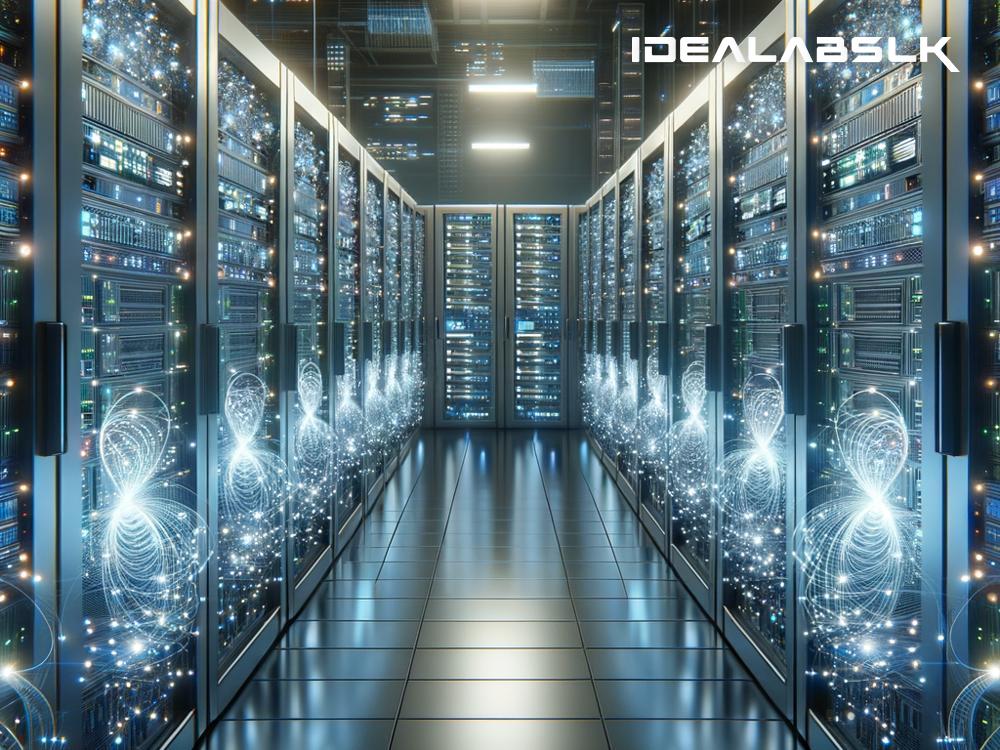How High-Performance Computing (HPC) Powers Up Machine Learning
In today’s world, where the amount of data being churned out every second is unfathomably huge, sifting through it for insights can feel like trying to find a needle in a haystack. That’s where Machine Learning (ML) comes into play, like a powerful magnet that can effortlessly attract the needle from the haystack. But to work its magic effectively, ML needs a mighty wizard behind the curtain, and that’s High-Performance Computing (HPC).
What is High-Performance Computing (HPC)?
High-Performance Computing might sound like something straight out of a sci-fi movie, but it’s very much a reality and a cornerstone in modern computing. In simple terms, HPC is about bringing together tons of computing power to solve big problems. Imagine if solving a giant puzzle, instead of working on it alone, you had thousands of friends to help you. That’s what HPC does for complex calculations and data processing—it divides and conquers, making seemingly insurmountable tasks achievable in much less time.
The Intersection of HPC and Machine Learning
Machine Learning is a subset of artificial intelligence that allows software applications to become more accurate in predicting outcomes without being explicitly programmed. It thrives on data—the more it has, the smarter it gets. However, as you can imagine, crunching through vast datasets to “train” these ML models demands a lot of computing grunt. This is where HPC comes in, acting as the powerhouse that can drive ML training and execution efficiently.
Why HPC is a Game-Changer for Machine Learning
Speeds Up Learning Time
One of the most significant advantages of using HPC for ML is the drastic reduction in learning time for models. What could take weeks on a standard computer might take only a few hours with HPC. This speed is crucial not only for developing models faster but also for iterating and improving them more rapidly.
Handles Bigger Data Better
As datasets grow in size, the computational requirements for processing them also shoot up. ML models benefit from more data as it helps them learn better and make more accurate predictions. HPC allows these models to handle and learn from gigantic datasets, something that would be impractical, if not impossible, on lesser hardware.
Enables Complex Model Training
Some ML models are like intricate puzzles with millions of pieces. Training these models requires immense computational resources that only HPC can provide. With HPC, researchers and data scientists can experiment with more complex models, leading to breakthroughs in understanding and application across various fields.
Real-World Applications
The partnership of HPC and ML is not just theoretical but has real-world applications that are transforming industries.
- Healthcare: From predicting diseases to developing drugs, the combined power of HPC and ML is enabling faster and more accurate medical diagnoses and treatments.
- Climate Science: Scientists use HPC-powered ML to better understand climate change, model weather patterns, and predict natural disasters with greater accuracy.
- Financial Sector: In finance, ML models powered by HPC sift through vast amounts of transaction data to detect fraud and make real-time trading decisions.
Future Outlook: The Road Ahead
As both HPC and ML technologies continue to evolve, their synergy is poised to unlock even more opportunities. With advancements in quantum computing and AI, the future of HPC-powered ML is incredibly promising. We can expect faster, more energy-efficient computing that can handle exponentially growing datasets and model complexities.
Conclusion
The fusion of High-Performance Computing and Machine Learning is like a match made in heaven, enabling us to push the boundaries of what’s possible with data. HPC amplifies the capabilities of ML, making it faster, more accurate, and capable of tackling problems from curing diseases to predicting climate changes. As we continue to generate data at an unprecedented rate, the role of HPC in powering ML will only grow, opening new horizons for innovation and discovery across every field imaginable.
In the grand scheme of things, it's becoming increasingly clear that the future of problem-solving, in all its forms, lies in harnessing the combined power of High-Performance Computing and Machine Learning. So, the next time you hear about a breakthrough in AI or a leap forward in data analytics, remember the unsung hero in the background, HPC, making it all possible.

